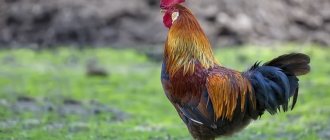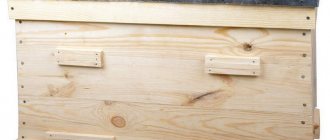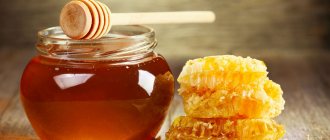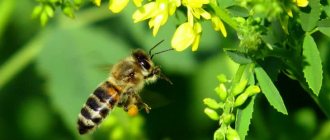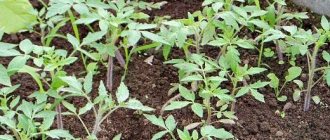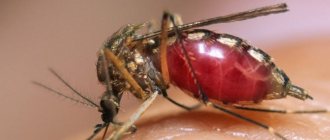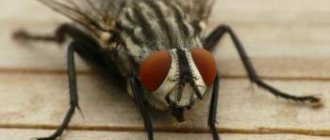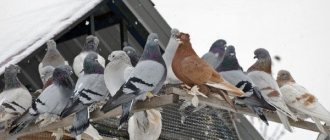Amount of honey for a certain time
Naturally, the volume of honey brought depends on many factors - conditions in a particular season, the number of flower stalks, the breed of bees, the health of the apiary, and so on. But, despite this, there are average indicators that make it possible to estimate how much honey can be obtained from one hive per season and for the calendar year as a whole.
How much honey per season?
To get the average nominal amount of honey in kilograms that can be obtained during the flowering season, you need to know:
- Number of hives in the apiary.
- Number of frames in each hive. From one frame you get an average of 1 to 1.5 kg of sweet delicacy. So the house will weigh as much as the number of filled frames it contains.
By multiplying the number of kilograms of honey the hive produces by the number of available houses, you can get the approximate amount of sweet nectar that the beekeeper will be able to collect from his apiary.
How much honey per year
To calculate the amount of harvest per year, it is necessary to multiply the volume of honey from one hive per season, starting from the moment of the first pumping until the moment when the bees go to winter. For example, during a season, on average, it is possible to collect about 40 kg of honey, while in a year this figure almost doubles and can reach 75-80 kg.
How much honey does one bee bring?
During the bribe process, a bee can bring approximately 30 mg of nectar to the hive. In a good period, the insect makes about ten flights and the collection reaches 40 - 50 mg at a time. To obtain 1 tsp. honey she needs to make 2 thousand flights.
How much honey does a bee produce in its lifetime?
The lifespan of an individual depends on the time of birth. On average, a bee lives about 60 days. And only 20 of them make productive flights.
Bees born in spring live the shortest. The peak of the honey collection season in summer forces insects to work at an accelerated pace. This significantly shortens the lifespan.
Those born in summer live longer, but, as a rule, do not survive frosty winters.
Bees born in the fall are able to live until the summer of next year and take part in the harvest. This is explained by the winter rest period and a nutritious diet rich in microelements.
Flying approximately 40 km per day, the bee brings 17 - 20 g of nectar. This amount yields ¼ g of the final product.
Thus, an insect brings about 5 g, or 1/2 tsp, during its life. treats.
Factors that influence the honey harvest
Of course, there is a whole list of factors that directly affect how much honey a beekeeper will collect from one hive and apiary as a whole in a calendar year and during the high season. The most intensively influencing include:
- Climatic features of the season. This includes air temperature indicators and how early spring comes and how late autumn begins.
- What food supply is chosen for the apiary. So, what the bees collect honey from influences. This could be a garden and vegetable garden, or the organization of nomadic beekeeping. In this case, harvesting will be carried out from those plants that are accessible to insects.
- The beekeeping region as a whole. It is important to understand that in the southern regions the honey collection season has been extended due to a longer flowering period. Therefore, there will always be more bribes and they will be spread out over time, compared to the middle zone, and even more so to the northern regions.
- Directly the health of the insects themselves. The family must be strong, have sufficient food supplies and conditions for reproduction. In addition, the beekeeper must take all measures to prevent the development of fungal infections and parasites in the house.
- In addition to all the above factors, how much honey an apiary produces depends heavily on the selected breed of bees .
How many bees can live in a hive?
Each bee colony consists of several species - queen (queen), worker bees, drones.
The queen produces eggs. Of these, 220,000 workers and 1,000 productive females are hatched per year.
Worker bees build honeycombs, collect nectar, clean the nest, and feed the queen and larvae.
Drones are the male part of a bee colony. They are necessary for fertilization of the uterus.
One bee family can include 15-80 thousand individuals. In some cases, this figure can increase to 100-110 thousand.
The number of insects living in one hive is influenced by:
- season;
- conditions of detention;
- livestock health.
What is the size of one family
A bee family is a full-fledged state, with its own hierarchy. The queen is in charge. All other individuals are engaged in its protection and provision. At the same time, the uterus has only one function - the production of eggs. The female is not concerned with raising the younger generation or feeding them.
Just below the queen are the drones, their task is to fertilize the uterus. In all other respects, the males have absolutely no rights - they are fed for the time being, but with the arrival of autumn they are simply kicked out of the hive into the cold. On average, each swarm raises up to 1000 drones, but only a tenth is left for reproduction - the extra ones are also evicted. The mortality rate among males is generally high, and the strongest individuals die first, because they fight tooth and nail for the right to impregnate the queen. Those who mate, by the way, also die.
The main population of the hive are worker bees. They are divided into two categories:
• flying ones collect nectar and pollen; • others look after the young and the queen.
Their entire rather short life is spent in labor, but, despite the apparent lack of rights, working individuals have all the levers of real power. They actually drive drones out of the hive, and can also starve the queen, who for one reason or another is not able to provide the family with proper replenishment. To replace the old queen, a new one is bred.
It is not difficult to calculate how many eggs will be produced per year - over the indicated period of time, about 150,000 eggs are obtained, because the fertility of a healthy female is amazing: she produces up to 2 thousand of them per day.
But let's return to our question: how many bees exactly live in one hive? The number, as mentioned above, depends on the season. So, in particular:
• in winter, up to 15 thousand can live in the house (meaning working individuals); • in summer the population increases to 65,000 – 85,000.
If the family is very strong, then there are up to 115,000 bees.
Seasonal fluctuations in numbers
The most significant increase in the population is observed exclusively in the spring. In just a few weeks, the number of working individuals increases 4-5 times. This is not surprising - it is after the end of winter that insects have to make maximum efforts. They are, in particular:
• actively preparing honeycombs; • carry out reconnaissance; • start collecting honey; • raise new generations of workers.
Almost all bees that survive the winter die in May. By the beginning of summer, their share in the family is, at best, 5 percent. The other 95% are young people. It is at this time that the optimal moment comes for dividing childbirth into several. If the beekeeper misses him, then with a high degree of probability half of the family will run away and settle somewhere in the nearest forest.
With the beginning of summer, working individuals begin to form reserves for the winter. The beekeeper needs to regularly check the hives and replace the frames filled with honey with empty ones, otherwise the rate of nectar collection drops sharply.
As the temperature drops in the fall, the queen begins to produce fewer eggs, and then stops doing so altogether. Immediately after this, the worker insects drive the drones out of the hive, and the remaining ones are not allowed to eat.
During the winter, the family falls into a state of rest - it gathers in a club (in the very middle of the hive) and waits for the arrival of spring, gradually using up its food reserves.
The number of bees in the nest during honey collection
Honey harvest is the period of flowering of the maximum number of honey plants, allowing insects to collect significant reserves of honey. For honey collection to be productive, the family must have not only flying bees that collect nectar and deliver it to the nest, but also young animals (hive individuals).
The latter perform the following functions:
- accept, process, place honey in honeycombs;
- seal the honeycombs with wax caps.
During honey collection, a strong family has from 50 thousand insects living in one hive, a weak one - less than 35 thousand.
Interesting! One strong family can collect two to three times more honey than several weak families with the same number. This fact is explained by the fact that in a strong nest, bees are less distracted by heating and feeding the brood and, accordingly, can freely collect nectar. This reduces the ripening time of honey and increases the life expectancy of flying individuals.
The life expectancy of bees during honey collection is:
- 60 days in a strong family;
- 35 days in an average family;
- 30 days in a weak family.
The optimal number of insects in a house during honey collection is considered to be 60-70 thousand individuals.
Counting methods
There are several methods for determining the number of bees in a hive. This makes it possible to control the development of the bee family, as well as calculate the expected volume of finished honey.
Method No. 1
In this technique, the beekeeper takes the frames installed in the hive as a basis. The standard frame contains 6600 cells (3300 on each side). The length of one adult insect is approximately 1.5 cm. This is equivalent to the size of 3 cells.
This means that one side of the frame can accommodate up to 1100 bees (or 2200 on both sides). This number is multiplied by the number of frames. Let’s say there are 10 of them, then we get 22 thousand only adult individuals, not counting the larvae in the honeycombs.
Method number 2
In this option, the count of the number of bees in a family is determined taking into account weight categories:
- first, weigh the hive along with the bees;
- then take away the weight of the hive itself with frames;
- the resulting number is divided by the average mass of one insect (each breed has its own parameter).
The result of the calculations will give the approximate number of bees present in the hive at a certain point in time.
How to increase apiary productivity
To increase productivity during the day and the summer as a whole, you need to apply the following methods:
- Place houses in places where the food supply is strongest.
- To contribute in every possible way to the growth of the family and its strengthening. To do this, under unfavorable conditions, it is necessary to feed the insects with additional fertilizers.
- At the first sign of infection, take immediate measures to eliminate the problem.
- Control the amount of brood. Leave the amount of honey that will satisfy the needs of the insects themselves.
Interesting Facts
To get a gram of honey, you need 2 grams of nectar. To obtain 30 grams of product, which is equal to a spoon, you need to collect 60 grams of nectar. A worker bee takes 30 milligrams of nectar per bribe. Therefore, to get a spoonful of honey, she needs to make 2 thousand bribes.
A bee usually makes 10 flights per day. This means that 200 insects must work all day to collect a spoonful of sweetness. Moreover, such productivity is characteristic only of strong families. Bees from such families begin honey collection in the morning and stop late in the evening. Sometimes they work even in cloudy weather and during rain. The productivity of weak families is 3 times lower.
Honey volumes depending on location
Naturally, in Russia, as in other countries of the world, there are regions where beekeeping and beekeeping are strongest. This is due not only to traditions and cultural characteristics, but, first of all, to favorable conditions and a strong food supply. Accordingly, the amount of harvest in each area will vary greatly.
Regions of Russia
On the territory of Russia, in different regions, they collect, as a rule, from 6 to 18 kg of honey for sale. The most honey-rich regions can be considered Tatarstan, Bashkortostan, Altai, Primorye, Krasnodar, and Rostov region. In a year, beekeepers here receive up to 50 kg - this is the amount of sweet nectar produced by one hive.
In Ukraine
In Ukraine there is some distribution, in terms of varietal and honey, and territorial division. So, there is the following predisposition:
- This is how the buckwheat variety is harvested in the central and western parts of the country.
- In the eastern and southern territories, sunflower and acacia honey are most often extracted.
- The maximum yield is observed in the forest-steppe zone, where rapeseed, buckwheat, and linden grow. The average from one hive is up to 16 kg per season.
On the territory of the Republic of Belarus
In the country, an average of 14 kg of sweet bee nectar is obtained from 1 bee house.
Features of Bashkir honey
It is not for nothing that Bashkiria is called the honey region of Russia, because it is there that there are the largest number of bee farms, which bring several tons of high-quality honey per year.
The first feature and advantage of Bashkir honey is considered to be a special type of local bee. In addition to high productivity and a special type of honey seal, this insect is distinguished by the highest immunity, resistant to frequent diseases, and excellent winter endurance. This bee remains harsh not only towards different types of bacteria, but also towards people; working with such families is almost impossible without a special suit and equipment. However, despite their rigor, they are highly valued at various exhibitions.
Beekeeping in Bashkiria has been passed down from generation to generation for many centuries, which contributed to the high quality of this craft. Some archaeological finds indicate that beekeeping appeared in this area one and a half thousand years ago, and records from the 18th century indicate that even then rich forests with a large number of insects in them were noted in Bashkiria.
The influence of bee breed on the amount of honey
It is important for a new beekeeper to choose the right breed of bees. This determines how much honey can be collected from one hive per season and for the whole year.
Here are the most popular among beekeepers in different regions:
- Bee Karpatka behaves well in central Russia, as well as in the southern regions of the country. It has high productivity of queens and good feeding of new offspring. In addition, these insects are distinguished by their calm nature. But there are also some negative features. Carpathian moths are highly compatible with wax moths, so the beekeeper needs to be prepared to fight the pest. It is not very winter-hardy. For this reason, it is not often found in regions with harsh winters.
- Central Russian species of bees suitable not only for the European part of Russia, but also for regions of Siberia, where frosts in winter are quite severe. The bee is more active, therefore it effectively protects its home, in comparison with the Carpathian one. It also effectively resists the appearance of various types of diseases. And easily adapts to any climatic conditions. But, it is worth keeping in mind that she prefers to collect honey from honey plants such as buckwheat and linden. Therefore, the beekeeper will have to take care of the presence of these plants in close proximity to the apiary. In addition, inspecting a hive of the Central Russian breed of bees is not so easy. She doesn't like unnecessary interference. Therefore, you will have to carry out intensive measures to neutralize and calm the insects in order to pump out the honey, or carry out parasitic measures.
- Bee Caucasian, as the name implies, is widespread in the Caucasus, and also loves the climatic features of the middle zone. Its distinctive feature is its ability to collect honey regardless of weather conditions. She is not afraid of cold temperatures and fogs. She will fly out to collect food even in light rain. In addition, its significant advantage is the ability to adapt to any food supply. Therefore, the beekeeper will not have to worry about what plants are near the apiary. But, a significant disadvantage of this breed is its poor adaptability to low temperatures in the winter months. It does not show aggression towards humans, but can attack its relatives.
- Another breed of bees is Karnika, which, like the Caucasian, prefers the middle zone and southern regions. It is unpretentious to various honey plants and economically uses the accumulated food supply. It should be used where it is possible to collect honeydew honey and a short-term honey collection.
Honey base and hive size
The closer the flower stalks are located, the less time and energy the bee spends when flying. For this reason, nomadic apiaries are considered the most profitable. In addition, hive size affects productivity. When there are a lot of flower stalks, it is optimal to use large houses that can accommodate up to 24 frames. However, such hives will be disadvantageous if the honey base is weak. Bees simply cannot fill all the empty honeycombs.
Based on the results of the clarified calculations of how much honey bees produce per season, the beekeeper analyzes his actions and finds out the reasons for the shortcomings. If errors are corrected correctly, you can expect more bribes for the next season, unless bad weather conditions interfere.
Advice from experienced beekeepers
To increase the productivity of your apiary, you need to listen to the following advice from experienced beekeepers:
- Sow honey plants on a free plot of land. Sweet clover, clover or milk thistle work great.
- In addition to the availability of food supply, it is important to exclude the presence of pesticides on plants. Therefore, you should not use such drugs either on your own property or try to avoid their appearance among your neighbors. If this cannot be excluded, it is advisable to take the apiary for a certain period of time to another territory, which will be environmentally more favorable and friendly to insects.
- It is important to bring free frames into the hive on time. This expands the space for increasing the amount of collected honey.
- It is important to monitor the health of the bee colony. At the first signs of the appearance of a disease, viral or fungal infection, as well as parasites, take urgent measures to eliminate them. Moreover, it is necessary to isolate this house, in which signs of illness have appeared, from others in order to prevent infection of all the plastic.
- Even better is to carry out preventive measures.
- Always remember that insects should spend the winter comfortably. To do this, they insulate the houses and replenish food supplies, providing not only honey, but not bee bread.
Considering these recommendations, it is easy to improve the operation of the apiary, collect a large amount of honey and increase revenue from the activity.
General average data for the world
In Russia, the average is from 7 to 17 kilograms. But at the same time, in Kuban they pump out from 20 to 25 kilograms per season.
One hive produces a 40-liter can of honey (true for Ukraine). The beds here bring an average of 20-30, and multi-hull hives up to 50 kilograms per year.
The vseopaseke.ru team, interested in the topic, found interesting information on different continents and regions of the world (the study guide The hive and the honey bee).
In the second half of the 20th century the situation was as follows:
- New World countries - average 18-35 kg, advanced farms - 90-180 kg;
- countries of the Old World - an average of 18 kg.
By continent:
- Europe, excluding the USSR - about 9 kg, a total of 110,000 tons per year;
- Asia, without the USSR - about 6.7 kg (but in China there is an increase in beekeeping farms), a total of 30,000 tons are downloaded in Asia per season;
- Africa - the main focus on wax production, honey is a “by-product” here and its total collection across the continent is 45,000 tons;
- North America: USA - average 20.7 kg; Channel - 39.6 kg;
- South America: average 18 kg, total per season 26,000 tons;
- Australia and Oceania: New Zealand - 29.3 kg per bee colony, Australia from 36 to 90 kg.
Nowadays, all over the world there is a return to natural beekeeping, when intervention in the life of bee colonies is minimal. Which has a positive effect on the health of bees and honey production - it increases.
Feed base
In the CIS there are about 880 million hectares of coniferous forests and 220 million hectares of mixed forests. Areas of coniferous forests with clearings with thickets of raspberries or fireweed are valuable for beekeeping; in other continuous areas there is little practical use.
The most melliferous are mixed forests with a predominance of trees such as maple, linden, elm, and willow. At the same time, the bees' honey flow lasts a long time. In the spring they collect nectar from maple, elm and willow, and in the summer they move to linden.
Linden forest areas are especially valuable. One hectare of such trees produces from 750 to 1000 kilograms of nectar, despite the fact that a strong family, under favorable conditions, can collect up to 20 kilograms daily!
Maple and willow trees are also rich in nectar, but can only produce up to 150 kilograms per day per hectare.
Good honey and pollen plants are honeysuckle, acacia, Amur velvet, wild raspberry, heather, fireweed, bicolor lespedeza, blue cyanosis and a large variety of other shrubs and herbaceous plants.
The steppe zone is dominated by shrubby and herbaceous honey plants. You should pay attention to the cultivated plants in nearby areas. The most common mass-cultivated plants are sunflower, buckwheat and clover.
When organizing an apiary near agricultural land, it is necessary to know the timing of chemical treatment and their types. Without such information, you can lose bees and end up with poisoned honey!
An apiary is not only a cute hobby, but also a means of earning money, so the question of how much honey one hive produces per season is extremely important. Experienced beekeepers know that the “yield” of honey can vary, but there are factors that influence it.
Methods for increasing hive productivity
You can increase the productivity of an apiary in different ways (replacing the queen, increasing the family, etc.). Here a lot depends on the skill and luck of the beekeeper.
Experienced owners take the following actions:
Nomadism
Good results are obtained by this method of maintaining an apiary, such as migration. It is most effective when there are many honey plants within a short distance. It is recommended to move the hives a short distance from the winter mooring site - no more than 30 km. During the honey-bearing period they make from 2 to 4 migrations. Additional stimulation of bees to work is carried out. To do this, frames with honey are often removed (up to 10 times per season). When moving to a new place, it is necessary that the living conditions do not differ much from those to which the bees are accustomed.
Strong family
An indicator such as the strength of a family is usually assessed by the number of frameworks it serves. In addition, it is assessed by the total mass of bees. There are about 250 insects on a frame measuring 435x300 mm.
In spring and autumn, the strength of the family is determined as follows:
In the summer, the weight of the family increases 2-3 times, so during the honey harvest period its weight should be 5-6 kg or more.
To maintain a strong family and increase it, you need to:
Bees from strong families have better developed working qualities . They are stronger and have a longer proboscis, which increases their performance.
Preventing insects from overheating
Bees independently regulate the microclimate inside the hive. They can withstand temperatures from 45 °C heat to 50 °C frost. Thermoregulation is carried out by working individuals, their actions depend on the temperature of the external environment.
When choosing a location for the apiary, care must be taken that it is hidden from direct sunlight.
When the hive overheats, insects begin to actively ventilate it. They do this by flapping their wings. The more the temperature in the hive differs from the optimal value, the more bees are involved in ventilation.
To regulate temperature, bees actively use the evaporation of water, which is delivered to the hive, so it should always be in the drinkers. In addition, if necessary, adults leave the hive to reduce heat generation in it. They are located in the form of a cluster next to the housing, near the entrance. In the evening, when the temperature returns to normal, the insects return home.
Methods to increase honey production
To increase the amount of honey produced, experienced beekeepers use additional methods of caring for bees:
- Enrich food with vitamin supplements;
- New hive designs are being developed;
- The brood larvae are discarded;
- Install nets to collect waste;
- Electric heaters are used;
- Install the upper tapholes;
- Feeding is carried out with flower syrup.
Honey and pollen
Beekeeping is a fairly painstaking and time-consuming activity that requires special knowledge and patience. But those who decide to study this craft and treat it with soul receive in return a large influx of energy, calmness and warmth. In addition to the pleasure gained from communicating with bees, this activity can bring in good income.
4 1 vote
Article rating
What to do if there are no honey plants nearby?
In search of food, bees can cover distances of up to 8 km in one direction, always accurately finding the way to the house. However, such a load negatively affects honey production, so you need to try to ensure that the distance between the hive and the honey plantation does not exceed 2 km.
If there is no suitable site nearby, and a nomadic apiary is not considered as an alternative option, you can prepare food for the bee colony yourself by sowing annual or perennial herbaceous plants suitable for collecting nectar and pollen on your own site or on any accessible territory.
Best suited for this purpose:
- fireweed (Ivan-tea angustifolia);
- common toadflax;
- clover;
- cornflower;
- dandelion officinalis;
- alfalfa;
- sainfoin;
- motherwort;
- psoralea stone fruit;
- rapeseed;
- burdock;
- sage;
- catnip;
- meadow rank;
- yellow clover;
- horned frog;
- weeping grass;
- peas (thin-leaved or mouse);
- camel-thorn.
